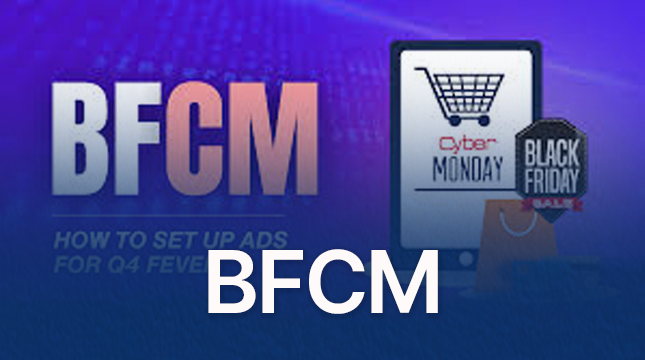This website uses cookies so that we can provide you with the best user experience possible. Cookie information is stored in your browser and performs functions such as recognising you when you return to our website and helping our team to understand which sections of the website you find most interesting and useful.
Why is graphic design my passion?

In today’s world, pursuing graphic design is my passion—a journey with a deep-rooted passion for visual storytelling and artistic expression. The art and practice of planning and projecting ideas and experiences with visual and textual content. Grow your graphic design as a passion for Netizens technologies as a graphic designer.
What is Graphic Design?
Graphic design is a craft where professionals create visual content to communicate messages. By applying visual hierarchy and page layout techniques, designers use typography and pictures to meet users’ specific needs and focus on the logic of displaying elements in interactive designs to optimize the user experience.
What does Graphic Design include?
The Artistic Playground:
How we found our basic connection for art and creativity at an early age. Art became the major way of expression, whether it was sketching on our notepads or doodling on every available surface. The appealing qualities of graphic design attracted us like never before as we grew older. Specially now that the power of AI can be utilized in design with AI logo maker sites. The concept of combining imagination, technical abilities, and visual communication was simply too appealing to pass up, paving the way for a lifetime of interests and a profession.
Visualization with Purpose:
Graphic design is defined by its ability to convey messages and generate emotions through images. We believe in the power of storytelling as artists, and graphic design allows us to express tales with purpose and clarity. Whether it’s producing an eye-catching poster that evokes emotions or developing an interesting logo that conveys a brand’s values, every design opportunity, including the ability to create an invitation, has the potential to have a huge effect.Whether it’s producing an eye-catching poster that evokes emotions or developing an interesting logo using an Ai logo generator that conveys a brand’s values, every design
Unlimited Creativity:
Graphic design is an ever-changing industry that allows me to constantly push limits, experiment, and develop my artistic talents. The digital domain provides an infinite palette of colors, shapes, and fonts, allowing me to fully express creative soul. Graphic design’s versatility and adaptability are what genuinely make it so appealing. Each project is a new challenge, a blank canvas on which we may realize our wildest thoughts and bring them to life.
Problem Solving in Design:
Graphic design is much more than just looks; it’s about problem-solving and coming up with creative solutions. Every project presents its own set of obstacles, and as a designer, frequently find ourselves thinking outside the box to develop ideas that not only look good but also serve their intended function. It’s quite satisfying to watch how they efficiently communicate information, spark curiosity, and produce excellent results for clients.
Collaboration and Connection:
Graphic design is not a solo profession; rather, it thrives on cooperation and interaction. This sector requires regular engagement with customers, team members, and fellow designers, resulting in each project being a collaborative effort from many perspectives. We value the opportunity to collaborate with people from other backgrounds, sharing ideas and seeking inspiration. Through these collaborations, we keep expanding our boundaries and honing our talents.
Continuous Learning and Growth:
Graphic design is an industry that is always changing. Technological breakthroughs, design trends, and customer tastes are always evolving, and a designer must keep ahead of the curve. This ongoing learning and development process keeps my enthusiasm for graphic design alive and well. That guarantees that we are continually improving as designers by engaging ourselves in design communities, taking workshops, and reading design books.
Impactful Visual Communication:
Visual communication is a worldwide language that spans language, culture, and age limitations. We can contact and engage people all around the world via graphic design, leaving a lasting impression through graphics that inspire, enlighten, and spark conversations. Knowing that our designs may affect people’s views and behaviors is a huge responsibility that fuels enthusiasm for graphic design.
The 8 fundamental types of graphic design are:
Visual identity graphic design
Visual identity Graphic design is a crucial aspect of brand identity, involving the creation of visual elements like logos, typography, and image libraries. Designers collaborate with stakeholders to create assets and guidelines, ensuring brand consistency across various media.
Marketing & advertising graphic design
Graphic design is crucial for marketing and advertising, as it engages target audiences and helps organizations promote effectively. Designers collaborate with company owners, directors, and professionals to create media, collateral, and digital assets.
User interface graphic design
UI design involves creating user-friendly interfaces for devices or applications, balancing aesthetic appeal with technical functionality. Designers must possess graphic design skills, UX principles, and programming languages.
Publication graphic design
Publications, traditionally printed, are now a digital medium. Graphic designers create layouts, typography, and artwork for various publications, requiring excellent communication, layout, and organizational skills.
Packaging graphic design
Packaging designers create concepts, mockups, and print-ready files for products, requiring expertise in print processes and industrial design. They may specialize in specific packaging types or industries, requiring top-notch conceptual and problem-solving skills.
Motion graphic design
Motion graphics, a popular medium in online media, TV, and film, includes animation, audio, typography, and video effects. Designers develop storyboards and bring concepts to life with animation, video, and traditional art, often requiring marketing, coding, and 3D modeling expertise.
Environmental graphic design
Environmental graphic design enhances people’s experience by creating memorable, interesting, and easy-to-navigate spaces. It includes signage, murals, museum exhibitions, office branding, public transportation navigation, retail store interiors, and event spaces. Designers collaborate with various fields, including graphic design and architecture.
Art and illustration for graphic design
Graphic art and illustration are distinct fields, with graphic artists creating original artwork in various forms while illustrators create commercially relevant content. They often collaborate with various professionals and use overlapping skills.
FAQs:
1.Why are you passionate about graphic design?
Designers tend to be passionate about their work. They constantly investigate new techniques and technologies and strive to stay ahead of the curve. This allows them to produce innovative and original designs that capture their audience’s attention. Passionate graphic designers are also lifelong learners.
2.Why am I interested in graphic design?
Working as a graphic designer allows you to apply your creative abilities to help organizations achieve their strategic goals. It enables you to explore different ideas and techniques to achieve a result that aligns with what the client wants and makes them feel happy.
3.What is your passion as a graphic designer?
At its core, Graphic Design is my passion. It’s the fusion of creativity and technology where designers transform ideas into visual masterpieces. Through color schemes, typography, and imagery, graphic designers evoke emotions and convey messages effectively. They bring a unique artistic flair to every project.
4.How valuable is graphic design?
A well-planned graphic design strategy is important for a business to establish its image and remain visually consistent throughout its marketing efforts. Using the art of graphic design will help improve a company’s brand identity and brand recognition.
Conclusion:
Graphic design is a passion that involves artistic excellence and storytelling, encompassing various forms such as fine art, decoration, and storytelling illustrations. The industry’s constant evolution and adaptability provide opportunities for creativity and problem-solving.
Graphic designers transcend linguistic and cultural boundaries, leaving a lasting impression on a global scale. The profession involves collaboration, problem-solving, and a continuous learning mindset, with artists often combining media and techniques to create their work.

Let's Start Your Project
Get free consultation for your digital product idea to turn it into reality!
Get Started





